On the afternoon of September 4, 2024, the Minister of Agriculture and Rural Development, Le Minh Hoan, chaired a teleconference with various ministries, departments, and 11 provinces and cities to discuss response measures for Typhoon Number 3.
POTENTIAL “SUPER TYPHOON”
According to a report by Mai Van Khiem, Director of the National Center for Hydro-Meteorological Forecasting, at 1 pm on September 4, the center of Typhoon Yagi was located at approximately 19.1 degrees north latitude and 117.5 degrees east longitude, in the eastern part of the Northern Waters of the South China Sea, about 710 km east of Hainan Island, China. The strongest winds near the center of the typhoon reached level 12 (118-133 km/h), with gusts of up to level 15, moving in a west-northwesterly direction at a speed of 5-10 km/h.
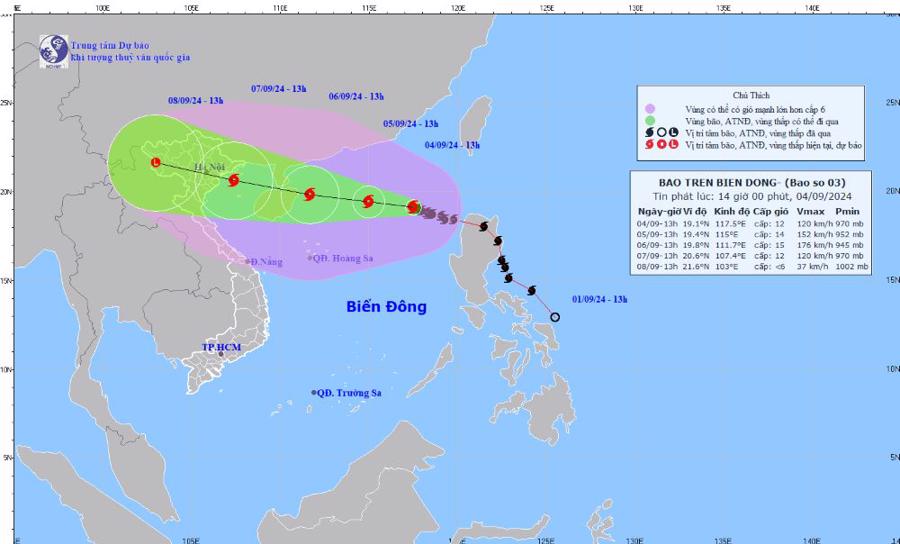
“After entering the South China Sea, the intensity of the typhoon increased by 4 levels within 24 hours. Currently, the sea water temperature is very high, and atmospheric conditions are also favorable for the typhoon to intensify. In the next 24-48 hours, the intensity of the typhoon will continue to increase until it approaches the waters east of Hainan Island, China,” Mr. Khiem informed.

According to Mr. Khiem, both Vietnamese and international agencies have provided relatively consistent forecasts regarding the direction and intensity of this typhoon, predicting that it will be similar to Typhoon Kalmaegi in 2014 and Typhoon Talim in 2023. It is expected that from September 5 to 6, Typhoon Number 3 will continue to intensify, with wind speeds potentially reaching up to level 15 and gusts of over level 17 near the center of the typhoon. The possibility of the typhoon becoming a super typhoon with wind speeds of level 16 cannot be ruled out when it is east of Hainan Island.
“With the current path of the typhoon, rainfall will be very high at around 200-300mm and could reach up to 500mm. Another possibility is that the typhoon could veer north, traveling along the coast of Guangxi (China), which would reduce the impact of wind and rain. However, this scenario is less likely.”
Mr. Mai Van Khiem, Director of the National Center for Hydro-Meteorological Forecasting.
According to forecasts, from the night of September 6 to the early morning of September 7, Typhoon Number 3 will enter the Gulf of Tonkin with an intensity of up to levels 12-13 and gusts of up to level 15, heading towards the coastal areas of the northern provinces and the north-central region of Vietnam. On land, from around noon to the afternoon of September 7, from Quang Ninh to Ha Tinh provinces, with the strongest impact predicted in Quang Ninh, Hai Phong, Thai Binh, Nam Dinh, and Ninh Binh, winds along the coastal areas near the center of the typhoon could reach levels 9-11 with gusts of up to level 13.
From September 7 to 9, heavy rains are expected across the northern and north-central regions of Vietnam.
Pham Duc Luan, Head of the Dyke Management and Flood and Storm Control Department (Ministry of Agriculture and Rural Development), reported that according to the Border Guard Command, 50,137 fishing vessels with 219,864 people on board had been checked and guided, including 504 vessels with 3,356 people operating in the northern waters of the South China Sea and the Hoang Sa archipelago (a dangerous area). These vessels have received information and are moving to avoid the storm.
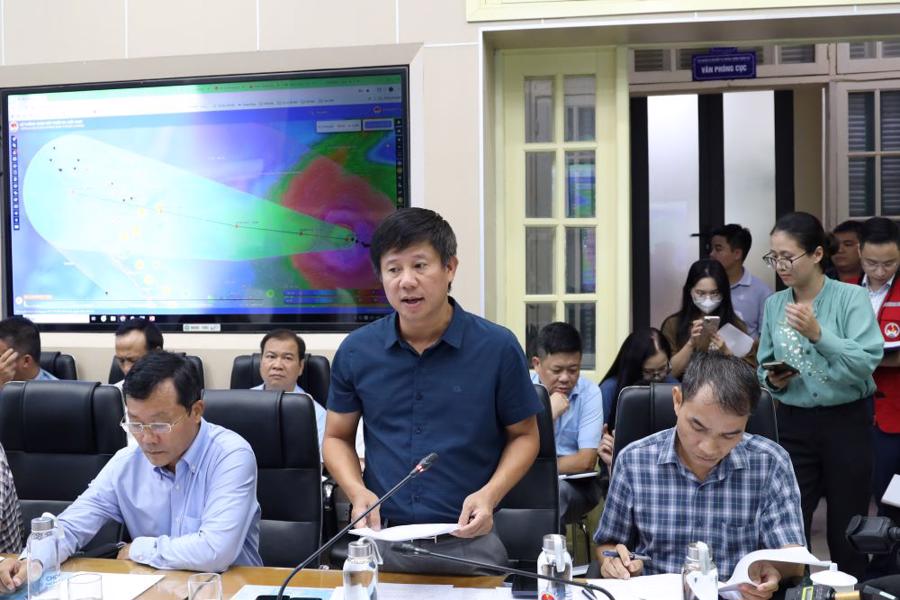
The provinces of Quang Ninh, Thai Binh, and Nam Dinh are expected to impose sea bans from September 6, 2024. Regarding dyke conditions, Mr. Luan said that there are currently 32 critical dyke sections along the sea and river mouth dykes in the coastal provinces from Quang Ninh to Nghe An that require special attention (2 in Quang Ninh, 10 in Hai Phong, 8 in Thai Binh, 8 in Nam Dinh, 3 in Ninh Binh, and 1 in Thanh Hoa); 3 constructions are currently underway (2 culverts on the Ha Nam dyke in Quang Ninh province; and the upgrade of Dyke I in Hai Phong city). Some dyke and revetment incidents have occurred but have not been resolved (Thinh Long revetment on the Hai Hau dyke in Nam Dinh province); the Binh Minh 4 dyke in Ninh Binh province has recently been completed but has not been reinforced on the field and the back.
The current design of the sea dykes can withstand storms of up to levels 9-10 and average tides of 5%, so there is a high risk of damage when the typhoon enters the Gulf of Tonkin with an intensity of levels 12-13 and gusts of up to level 16 (exceeding design levels).
PROACTIVE MEASURES ARE ESSENTIAL IN STORM RESPONSE
Nguyen Hoang Hiep, Deputy Minister of Agriculture and Rural Development, stated that according to current forecasts, Typhoon Yagi is an extremely powerful storm, and it has been a long time since a storm of this magnitude has impacted both land and sea areas in the north of the country.
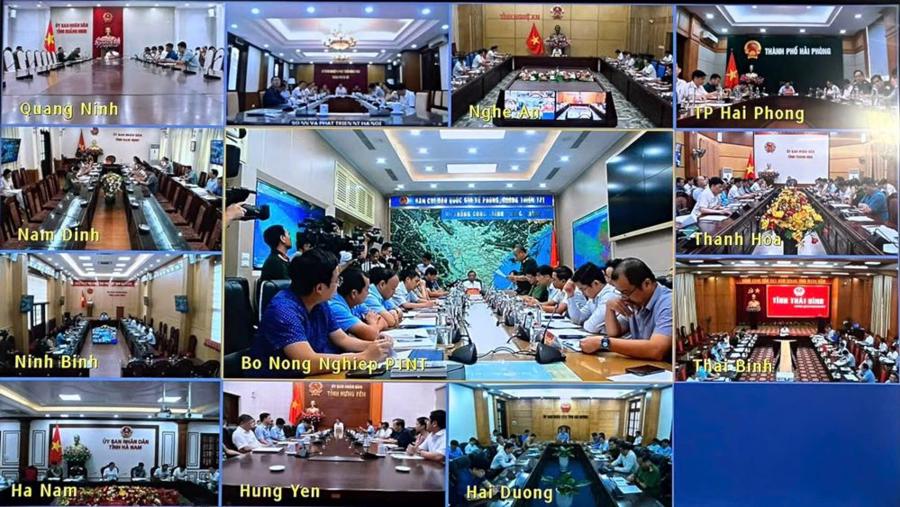
“Hanoi, Quang Ninh, and Hai Phong form a development triangle, and the entire key agricultural region of the North is also located in this area. According to statistics, there are about 20,000 fish cages and nearly 1 million hectares of autumn rice, half of which are currently flowering. Just 24 hours of flooding can cause damage. Not to mention the large amount of vegetables that farmers are preparing for the Tet holiday. In this region, if the typhoon makes landfall, the most worrying consequence is flooding in both urban and rural areas, as well as landslides in mountainous regions,” Mr. Hiep emphasized.
“If Typhoon Yagi remains at its current level (level 4 risk of natural disasters), a steering committee will be established, scenarios will be calculated, and tasks will be assigned to ministries, sectors, and units for inspection. However, if the typhoon reaches level 5 (catastrophic level), the level of authority will be higher.”
Mr. Nguyen Hoang Hiep, Deputy Minister of Agriculture and Rural Development.
“As reported, the provinces are taking proactive measures, but since it has been many years since we have experienced such a strong typhoon, I would like to urge the provinces not to be complacent. First and foremost, we must find ways to minimize losses of life and property. In particular, large cities like Hanoi, Hai Phong, and Quang Ninh also face the risk of flooding if heavy rains occur,” warned Deputy Minister Nguyen Hoang Hiep.
Concluding the meeting, Minister Le Minh Hoan emphasized that Typhoon Number 3 is an extremely powerful storm, and requested that localities not be complacent and proactively take response measures to minimize losses of life and property of the people and the state.
“Since 2014, we have not encountered a super typhoon with such a high intensity as Typhoon Yagi. It is rare for international forecasting centers to agree so closely on the scope, intensity, path, and eye of a typhoon as they have with this one,” said Mr. Hoan.

Minister Le Minh Hoan requested that localities proactively respond to Typhoon Number 3, as there is not much time left. At the same time, he instructed the localities to develop specific scenarios and plans to minimize risks to human life and economic and infrastructure assets. Each individual, agency, sector, and locality must be proactive and identify risks to deal with them.
Minister Le Minh Hoan specifically instructed: The key task in the coming hours is to decisively guide and instruct fishing vessels and other vehicles (including tourist boats and cargo ships) still operating at sea or along the coast to evacuate from dangerous areas or return to safe shelters. Localities must resolutely not allow people to stay on cages, rafts, or watchtowers when the typhoon makes landfall; ensure the safety of tourists and people on the islands; and proactively ban sea activities and gatherings, especially in the provinces and cities from Quang Ninh to Nghe An.
In the plains and mountainous regions, it is necessary to deploy task forces to inspect and check residential areas along rivers, streams, low-lying areas, and areas prone to flooding, landslides, and flash floods to proactively evacuate and relocate people to safe places.
“Unraveling Traffic Congestion and Flooding: Ho Chi Minh City’s Herculean Task for 2030”
Emphasizing the importance of a robust development strategy, Dr. Du Phuoc Tan, a prominent researcher at the Ho Chi Minh City Institute for Development Research, addressed a gathering of experts and stakeholders at a workshop on August 24.
Landmark projects transforming Ho Chi Minh City’s urban landscape
With the first metro line and many other key infrastructure and transportation projects under construction, the urban landscape of Ho Chi Minh City has been transformed in recent years.

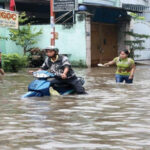
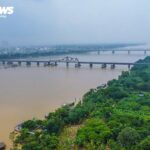
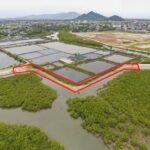


![[Photo Essay]: Experts, Managers, and Businesses Unite to Forge a Path Towards Sustainable Green Industry](https://xe.today/wp-content/uploads/2025/07/z678592918-218x150.jpg)












